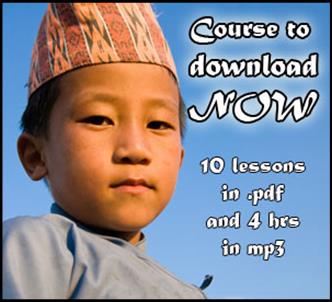|
Cultural aspect of Nepal
Religions in Nepal: It is considered that Nepal has two main religions. A majority of the population is Hindu, while the other is a Buddhist. The Buddhists have habituelemet facies while most Asian Hindus on Air India. The coexistence of two systems is done in respect and harmony. Although both traditions believe in reincarnation, Hinduism is a religion worshiping a very large number of God Vishnu which is the principal. In one of the many shops, you can watch (and buy!) Very detailed representations of Buddhist and Hindu cosmology. While in most Western countries, religion is the taboo and is experienced privately, religion and spirituality in Nepal is closely linked to social life. Read more about Religions of Nepal Travelogue:
"In my Pokhara Guesthouse (Yeti Hotel), I had a room next to another. In the morning, when I Wole up, I saw that this room was open and I could discern representations of Buddhism and Hinduism . By requiring owners of the guesthouse, I am told that this room was for prayer. Since the employees were Buddhists and other Hindus, had moved on a prayer room for the two religions. "
Nepali food: To some extent, Indian traditions are not very far from the Nepalese cuisine. Puts the most typical is called against the Dhal Bhat. The Nepalese can eat 2 times a day this simple but nice meal. This is a dish consisting of rice, lentils and spicy vegetables that are perfectyl mixed. Dhal Bhat might include a flat yughurt or other vegetables. You mixed it with rice, depending on your taste of the moment. Some types of Dhal Bhat also involves a youghourt that softens the vegetables and spicy sauces. The Nepalese eat with the hand. The price of dhal bhat changes with the location of the restaurant. At 300 on the Lake Side Pokhara Road, one can find (and sometimes ausi good) to less than 100 NRs dan SLES isolated streets.
Cultural Aspect of Nepal
The cultural aspect of Nepal is one that comes with a great story. Its heritage has within it variations of its music and dance, art, and its folktales. The different ethnic, tribal, and social standards of nepalese people living in the different districts helped to expand languages, literature, and religion among themselves. Nepalese people also have many festivals that celebrate the deities the Nepalese believe in further showing the strength of the culture.
Dancing and playing music are important for Nepalese culture. Not only does it bring its culture together, but it also tells the history of Nepal. Legends of the Lord Shiva are prevalent in the Himalayas. Many legends say that dancing originated in the home of the Lord Shiva which is said to be the Himalayan Kingdom of Nepal. There Shiva dances (the tandava dance) shows that dancing is a very ancient tradition in the Nepalese culture. The many different altitudes and ethnicities continue to change the styles and variations of a lot of the dances and dancing costumes. Music and its instruments are also going to take on a bit of change when you move throughout the countries different regions. The tunes of instruments change with the themes of the regions with many topics having to do with what the people see everyday like the rights of marriage, harvesting of crops, and war stories.
The cultural diversity of Nepal does not stop with the music. As it turns out there are at least 92 different languages that are being spoken in Nepal as recorded by the 2001 census. The language of Nepal has gone through many changes and evolved from 3 major languages. Those languages are Indo-Aryan, Tibeto-Burman, and Indigenous. The major languages that are spoken in Nepal are Nepali which is the leading language being spoken by a little less than 50% of the people as a monther tongue. The other languages are not so widely used with Maithili being used by 12% of people, Bhojpuri used by 8%, and Tharu being spoken by 6% of the people. The official national language of the Nepalese people is Nepali. This language helps close the gap of languages by the different language groups within the country.
The religion in Nepal is an important part of the cultural aspect of Nepal. The Hindu and Buddhist traditions date back to more than 2 millenniums. With the birth place of Buddha in Lumbini to the Kathamandu temple for Hindus Nepal has a deeper cultural background than you can imagine. When the 2001 census came out it had some revealing numbers to show to the people of the country of Nepal. The census showed that at least 80% of the population was Hindu and that the religion of Buddhism was being practiced by around 11% of the population. Also it should be noted that when it came to the census many people labeled Hindu and Buddhism, but many times they practiced a blend of Hinduism and Buddhism. The population also practices other religions such as Muslim at around 20%, Sherpa at 4%, and 3.6% of the population practicing the religion of Kirant. Christianity is also practiced in Nepal but is done so at less than 0.5% but is brought by some obscur christian sect preaching their religion under the cover of volountary help.
|


|
Learn Nepali now |
|
> Quick and safe payment (https) > Useful vocabulary > 4 hours of audio material in .mp3 > Focus on travel > Perfect for independent traveler
> More than 4250 downloads since 2012
29 € today Normally 55 €
|
|
Quick & Safe payment
Download link sent to your email
The best way to enjoy Nepal
info@himalaya-nepal.com |